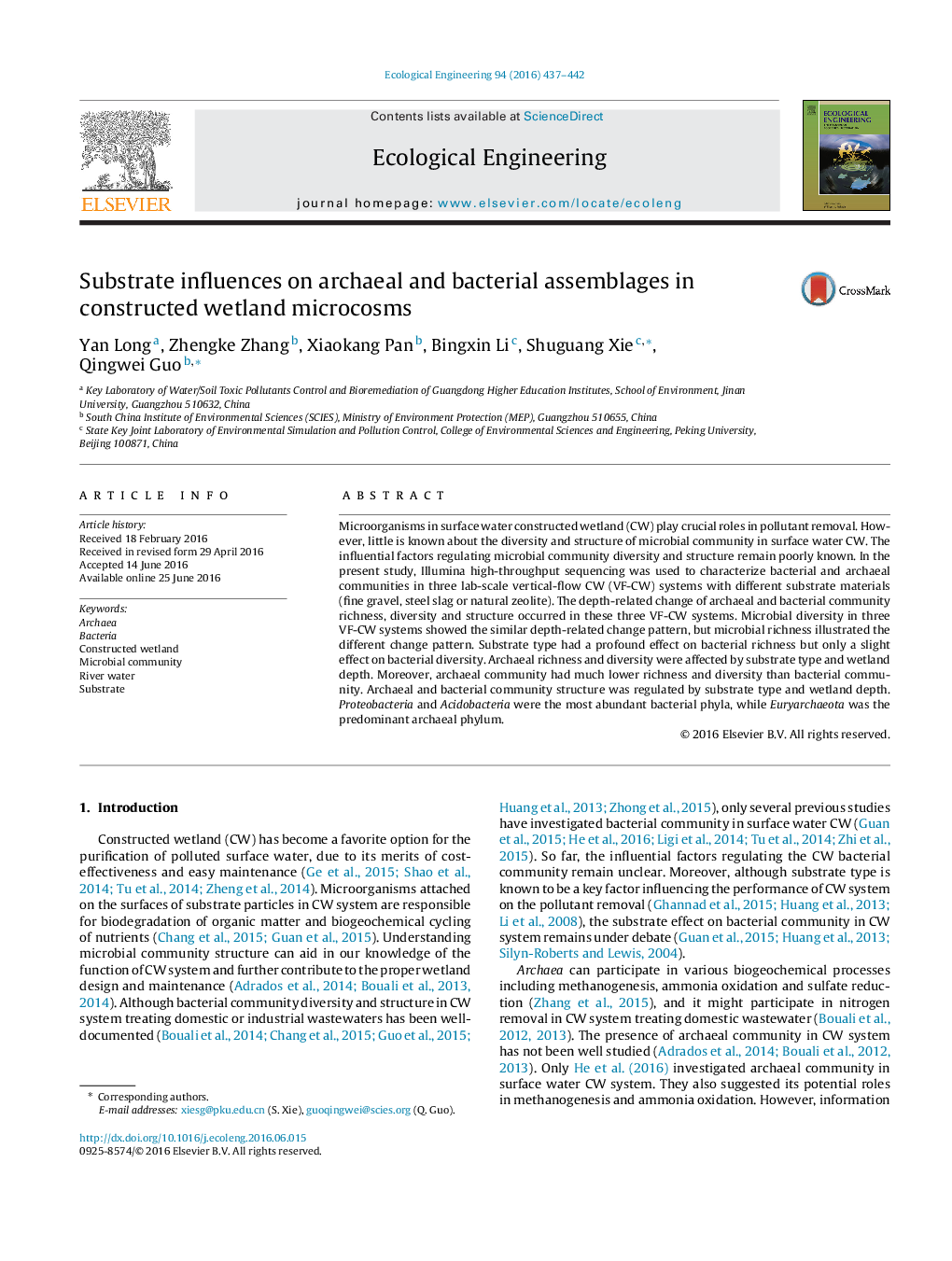| Article ID | Journal | Published Year | Pages | File Type |
|---|---|---|---|---|
| 4388570 | Ecological Engineering | 2016 | 6 Pages |
Microorganisms in surface water constructed wetland (CW) play crucial roles in pollutant removal. However, little is known about the diversity and structure of microbial community in surface water CW. The influential factors regulating microbial community diversity and structure remain poorly known. In the present study, Illumina high-throughput sequencing was used to characterize bacterial and archaeal communities in three lab-scale vertical-flow CW (VF-CW) systems with different substrate materials (fine gravel, steel slag or natural zeolite). The depth-related change of archaeal and bacterial community richness, diversity and structure occurred in these three VF-CW systems. Microbial diversity in three VF-CW systems showed the similar depth-related change pattern, but microbial richness illustrated the different change pattern. Substrate type had a profound effect on bacterial richness but only a slight effect on bacterial diversity. Archaeal richness and diversity were affected by substrate type and wetland depth. Moreover, archaeal community had much lower richness and diversity than bacterial community. Archaeal and bacterial community structure was regulated by substrate type and wetland depth. Proteobacteria and Acidobacteria were the most abundant bacterial phyla, while Euryarchaeota was the predominant archaeal phylum.
